
Tartu University: Estonia’s Intellectual Heart
Discover Tartu University: A blend of historic charm, architectural beauty, and vibrant academic life in the heart of Estonia's cultural capital.
Tartu University, founded in 1632, is one of the oldest universities in Northern Europe and a cornerstone of Estonia's academic and cultural heritage. Nestled in the charming city of Tartu, this institution is not only a place of learning but also a remarkable tourist destination that offers a blend of history, architecture, and vibrant student life. The university’s main building, a neoclassical masterpiece, stands proudly in the heart of Tartu. Visitors can explore its grand halls and admire the historical architecture that has been meticulously preserved. The university also houses several museums, including the University of Tartu Museum and the Old Observatory, where you can delve into the rich history of science and education in Estonia. Walking through the lush university grounds and botanical garden, you’ll find a peaceful retreat in the midst of the city. The garden is home to exotic plants and serene pathways, making it a perfect spot for a leisurely stroll. Throughout the year, the university hosts a variety of cultural events, lectures, and exhibitions, providing a dynamic atmosphere that reflects the intellectual spirit of Tartu.
Local tips in Tartu University
- Visit the University of Tartu Museum for an in-depth look at the university's history and its significant role in Estonia.
- Don’t miss the Tartu Botanical Garden, especially in the spring and summer when the flora is in full bloom.
- Explore the Old Observatory for a unique glimpse into the history of astronomy and science in Estonia.
- Check out the university’s event calendar to catch a lecture or cultural event during your visit.
- Take a walk around the university town to experience the vibrant student life and local cafes.
Tartu University: Estonia’s Intellectual Heart
Tartu University, founded in 1632, is one of the oldest universities in Northern Europe and a cornerstone of Estonia's academic and cultural heritage. Nestled in the charming city of Tartu, this institution is not only a place of learning but also a remarkable tourist destination that offers a blend of history, architecture, and vibrant student life. The university’s main building, a neoclassical masterpiece, stands proudly in the heart of Tartu. Visitors can explore its grand halls and admire the historical architecture that has been meticulously preserved. The university also houses several museums, including the University of Tartu Museum and the Old Observatory, where you can delve into the rich history of science and education in Estonia. Walking through the lush university grounds and botanical garden, you’ll find a peaceful retreat in the midst of the city. The garden is home to exotic plants and serene pathways, making it a perfect spot for a leisurely stroll. Throughout the year, the university hosts a variety of cultural events, lectures, and exhibitions, providing a dynamic atmosphere that reflects the intellectual spirit of Tartu.
When is the best time to go to Tartu University?
Iconic landmarks you can’t miss
AHHAA Science Centre
Explore the interactive exhibits and engaging experiences at AHHAA Science Centre, Tartu's premier destination for science and discovery.
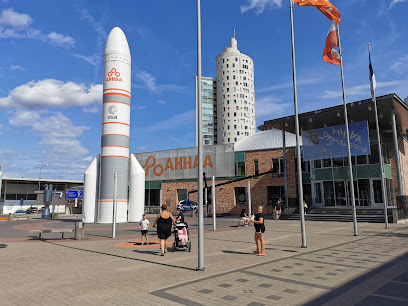
Estonian National Museum
Explore Estonia's rich cultural tapestry at the Estonian National Museum, where history, art, and tradition converge for an unforgettable experience.
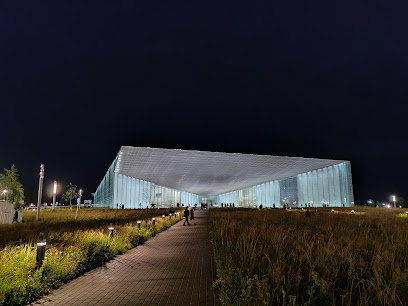
Tagurpidi Maja (Peapeal OÜ)
Experience a whimsical architectural wonder at Tagurpidi Maja, Tartu's Upside Down House, where everything is inverted and creativity knows no bounds.
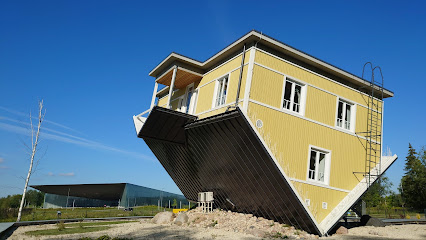
Town Hall Square
Explore the historic Town Hall Square in Tartu, a vibrant hub of culture and architecture steeped in the charm of Estonia.
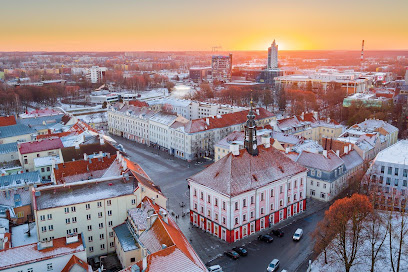
Botanical Garden of the University of Tartu
Discover the diverse flora and tranquil beauty of the Botanical Garden of the University of Tartu, a top tourist attraction in Estonia.
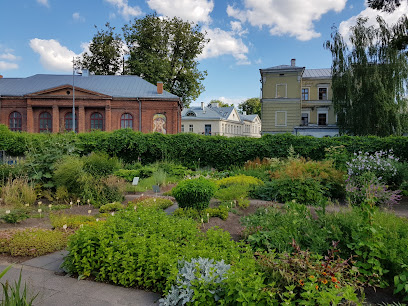
Aura Waterpark
Discover the ultimate indoor aquatic adventure at Aura Waterpark in Tartu, Estonia - a family-friendly destination perfect for all ages.
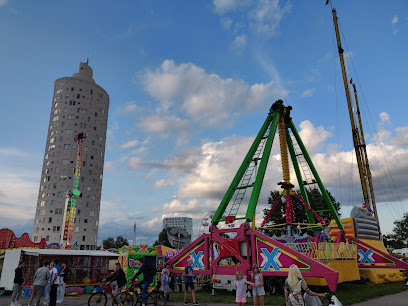
Ice Age Centre
Explore the Ice Age Centre in Äksi, Estonia - a captivating museum showcasing prehistoric life and the wonders of our planet's past.
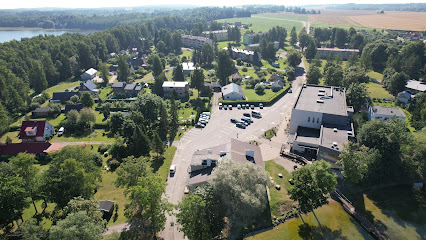
Estonian Aviation Museum
Explore the skies at the Estonian Aviation Museum, where history and aviation come alive in a stunning Tartu County setting.
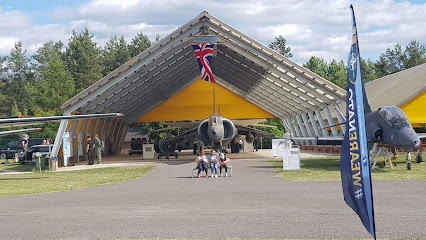
Tartu Mänguasjamuuseum / Tartu Toy Museum
Delve into the whimsical world of childhood at the Tartu Toy Museum, featuring an extensive collection and interactive exhibits for all ages.
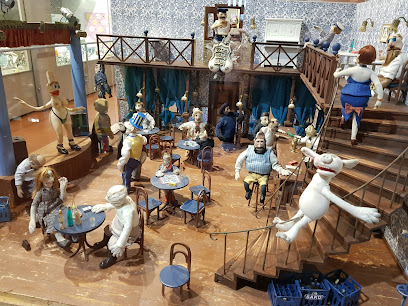
Restaurant München - Weihenstephaner Wirtshaus
Discover the heart of Bavarian culture at Weihenstephaner Wirtshaus, where authentic German cuisine meets a lively beer hall atmosphere in Munich.
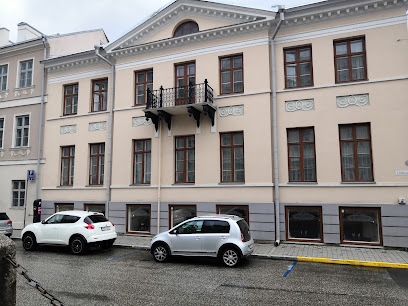
University of Tartu
Discover the University of Tartu, Estonia's oldest university, a stunning blend of history, architecture, and vibrant student life in the heart of Tartu.

Ruins of Tartu Cathedral
Discover the enchanting ruins of Tartu Cathedral, a historical landmark that unveils the rich tapestry of Estonia's architectural heritage.

Illegaard
Discover the vibrant atmosphere of Illegaard, Tartu's favorite pub for locals and travelers alike, offering delicious drinks and hearty meals.
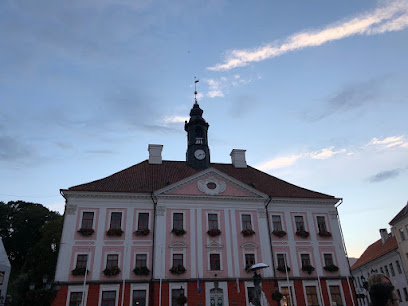
St. John Church, Tartu
Explore the architectural beauty and historical significance of St. John Church in Tartu, a must-see landmark with stunning terracotta sculptures.

Tartu Angel's Bridge
Discover the charm of Tartu Angel's Bridge, where stunning views and serene strolls await in the heart of Estonia.
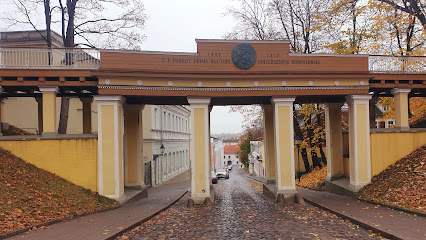
Unmissable attractions to see
Tagurpidi Maja (Peapeal OÜ)
Discover the whimsical Tagurpidi Maja in Tartu, Estonia – an upside-down house that promises a fun and unique museum experience for all ages.
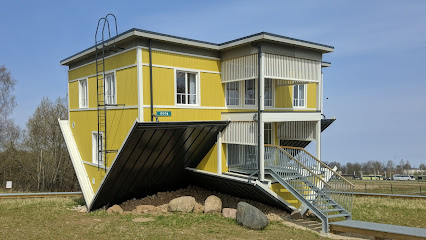
Cathedral Hill Park
Explore Cathedral Hill Park in Tartu for a blend of nature, history, and stunning city views, perfect for relaxation and exploration.
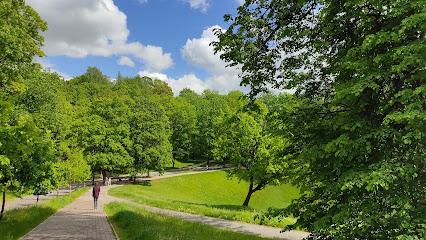
University of Tartu, Museum of Natural History
Discover Estonia's rich biodiversity and natural wonders at the University of Tartu Museum of Natural History, an engaging educational experience for all.
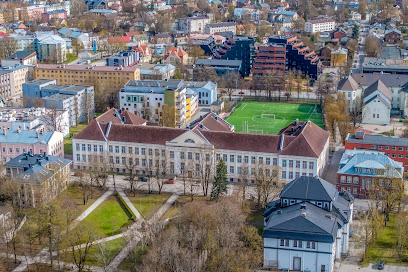
Laulupeomuuseum
Explore the cultural heartbeat of Estonia at the Laulupeomuuseum, where the song festival's rich history comes to life.
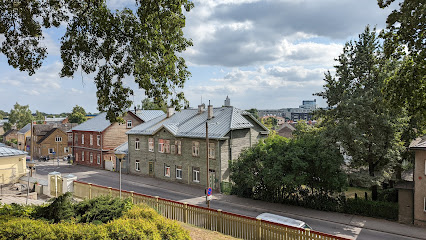
University of Tartu Art Museum
Explore captivating art and history at the University of Tartu Art Museum, a cultural gem in Estonia that showcases both local and international masterpieces.
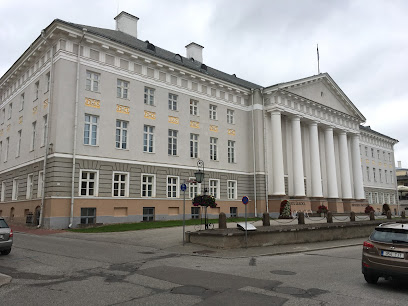
Kissing Hill
Discover the enchanting beauty and romantic charm of Kissing Hill in Tartu, a must-visit destination for breathtaking views and memorable moments.
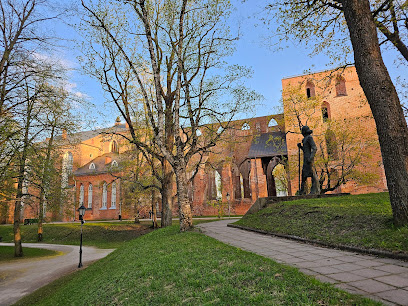
Kalevipoeg – War of Independence Monument / Tartu Vabadussõja mälestussammas
Explore the Kalevipoeg Monument in Tartu, a remarkable tribute to Estonia's War of Independence and a symbol of national pride.
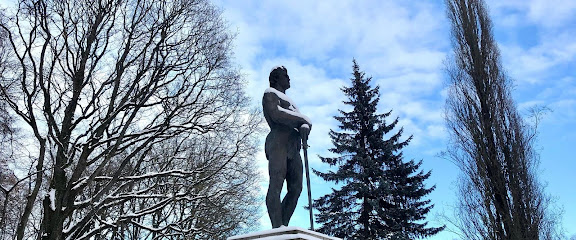
Oskar Lutsu majamuuseum
Discover the literary legacy of Oskar Luts at Tartu's Oskar Lutsu Majamuuseum, a charming museum dedicated to Estonian literature and culture.
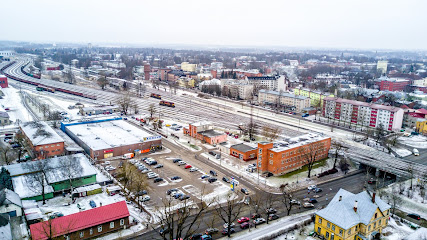
19. sajandi linnakodaniku muuseum
Explore Tartu's rich history at the 19th Century City Burgher Museum, where the stories of urban life come alive through captivating exhibits and engaging displays.
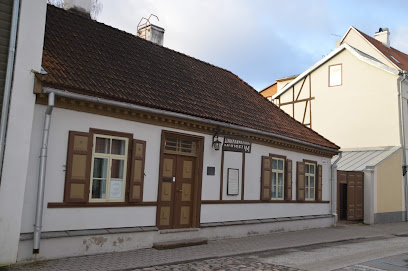
Sculpture Oscar Wilde and Eduard Vilde
Explore Tartu's Oscar Wilde and Eduard Vilde Sculpture, a captivating tribute to literary excellence amidst the city's rich cultural tapestry.
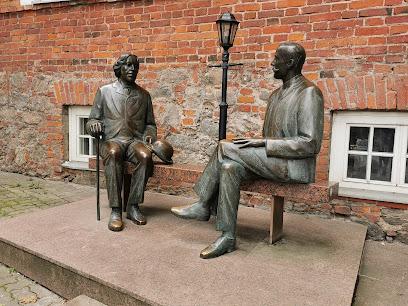
Sculpture Oscar Wilde and Eduard Vilde
Discover the artistic tribute to Oscar Wilde and Eduard Vilde in Tartu, Estonia – a must-see for literature and art enthusiasts.
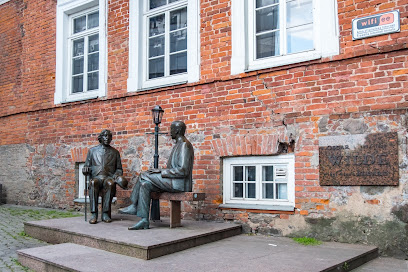
Monument of Estonian and Armenian peoples friendship
Explore the Monument of Estonian and Armenian Peoples Friendship in Tartu, a beautiful tribute to international unity and cultural connections.
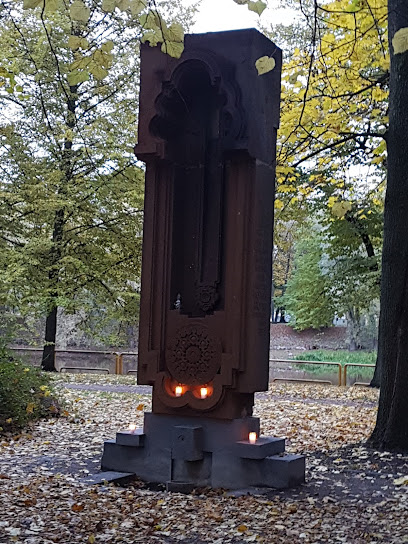
Monument of Nations
Discover the Monument of Nations in Tartu, a striking symbol celebrating cultural diversity and unity, nestled in a vibrant urban landscape.
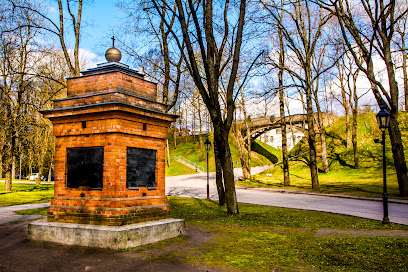
Tartu ülikool
Experience the rich academic heritage and cultural vibrancy of Tartu Ülikool, Estonia's oldest university, in the heart of Tartu's historical landscape.
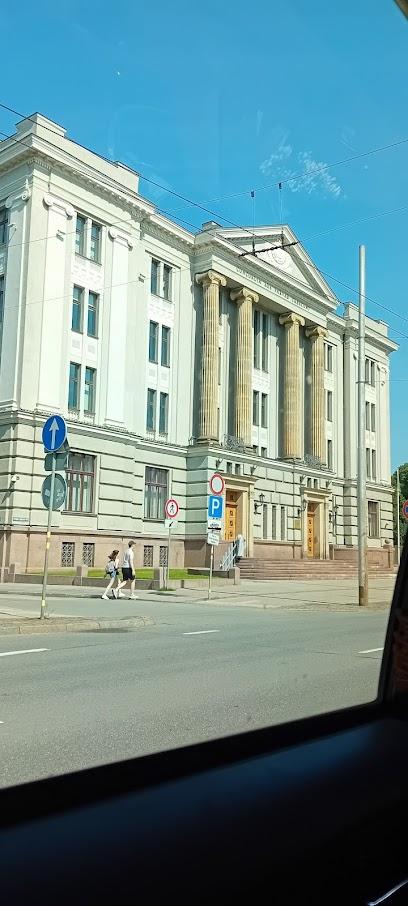
Essential places to dine
Gunpowder Cellar of Tartu
Experience Tartu's rich history at the Gunpowder Cellar - where traditional Estonian cuisine meets craft beer in an unforgettable setting.
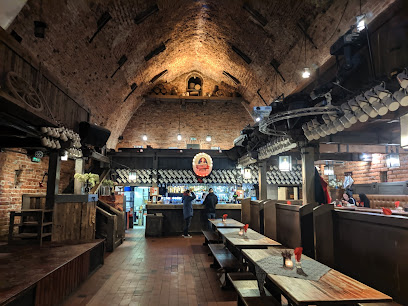
Cafe-restaurant Werner
Discover Café-Restaurant Werner in Tartu: A perfect blend of cozy ambiance and delicious cuisine awaits you.
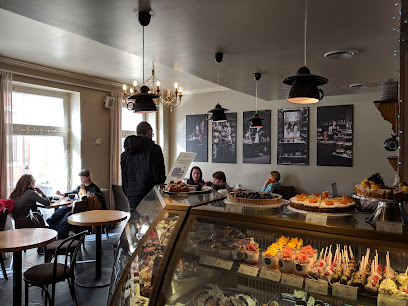
Vapiano Tartu
Savor authentic Italian cuisine at Vapiano Tartu, where fresh ingredients meet a cozy atmosphere in Estonia's charming city.
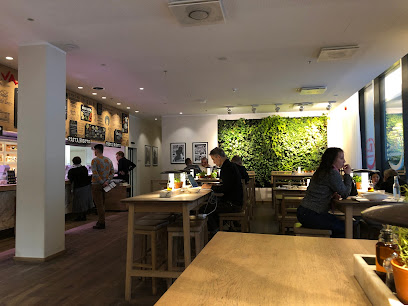
Hansa Tall & Hansa Hoov
Discover culinary delights and local culture at Hansa Tall & Hansa Hoov – Tartu's premier destination for food, drinks, and relaxation.
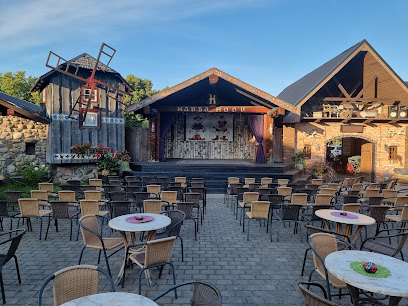
Restaurant München - Weihenstephaner Wirtshaus
Discover the rich flavors of Germany at Weihenstephaner Wirtshaus in Tartu – where traditional cuisine meets a lively beer hall atmosphere.
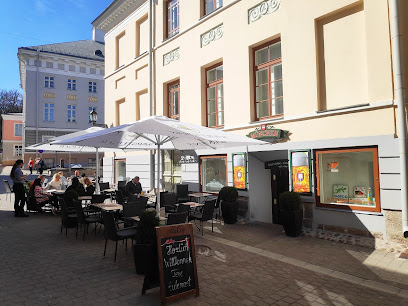
Gustav Gastro Cafe
Experience the flavors of Estonia at Gustav Gastro Cafe in Tartu - where local ingredients meet innovative cuisine.
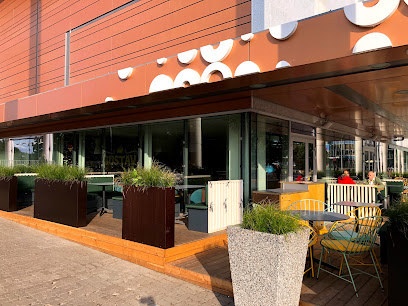
Vilde Ja Vine
Experience the essence of Estonian cuisine at Vilde Ja Vine - where local flavors meet fine wines in a cozy atmosphere.
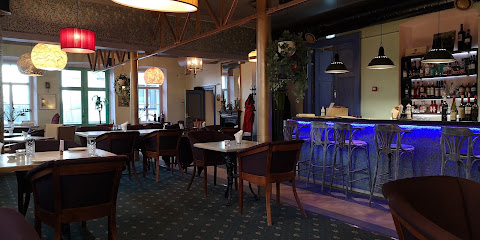
Truffe
Experience exceptional dining at Truffe in Tartu - where local flavors meet international cuisine in an inviting atmosphere.
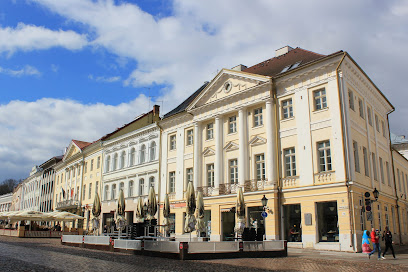
Krempel
Experience authentic Estonian cuisine at Krempel in Tartu—where local flavors meet modern dining.
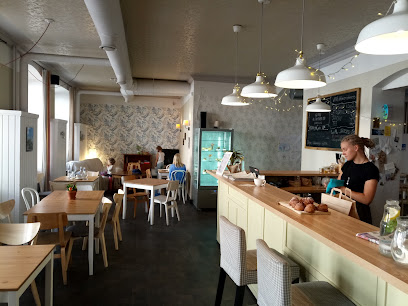
JOYCE
Discover Tartu's culinary gem at JOYCE – where fusion cuisine meets exquisite cocktails in an inviting atmosphere.
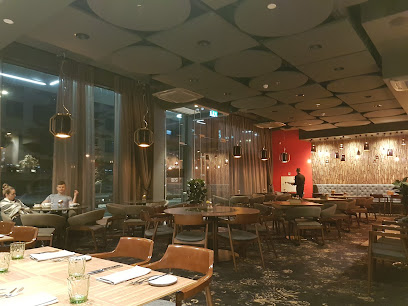
Chez Andre
Experience Tartu's finest dining at Chez Andre – where local flavors meet culinary artistry in a cozy setting.
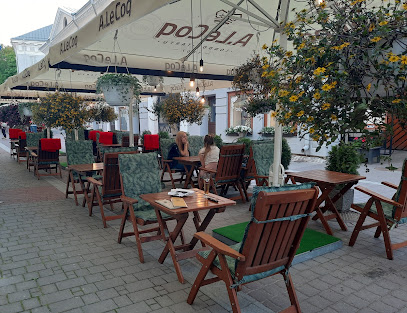
Hesburger Raekoja plats
Discover the vibrant flavors of Hesburger Raekoja Plats in Tartu – where delicious fast food meets local charm.
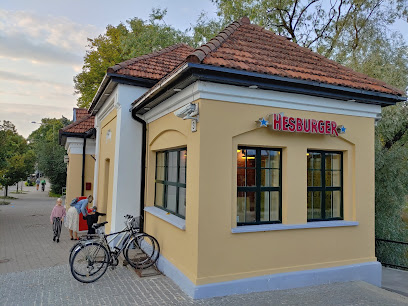
Mandala Restoran
Experience authentic Nepalese cuisine at Mandala Restoran in Tartu – where every dish tells a story.
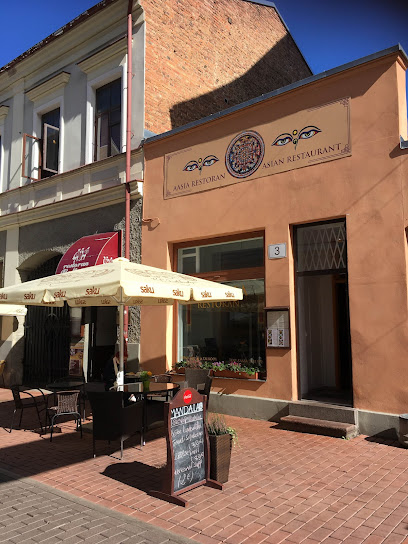
Smile Restoran
Discover the authentic flavors of Armenian and Georgian cuisine at Smile Restoran in Tartu – where every meal is a delightful experience.
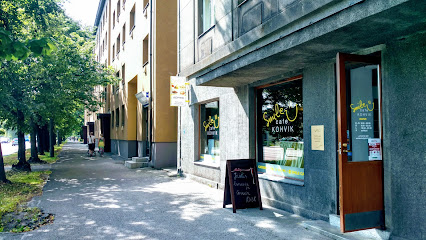
Restoran Fii
Experience the finest Estonian cuisine at Restoran Fii in Tartu, where tradition meets innovation in every dish.

Markets, malls and hidden boutiques
Lõunakeskus
Discover Lõunakeskus, Tartu's bustling shopping mall featuring diverse shops, delightful dining, and exciting entertainment options for every traveler.

Tasku Centre
Discover Tasku Centre, Tartu's ultimate shopping mall, with diverse retail, dining, and entertainment options for an unforgettable experience.
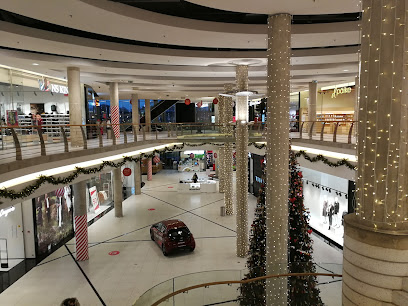
Tartu Kaubamaja
Discover Tartu Kaubamaja: A vibrant shopping mall in Estonia offering local brands, dining, and entertainment for an unforgettable experience.
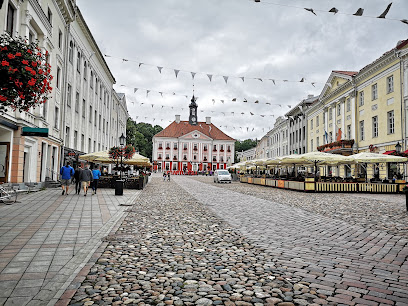
Kvartal
Experience the best of shopping, dining, and entertainment at Kvartal, Tartu's ultimate retail destination.
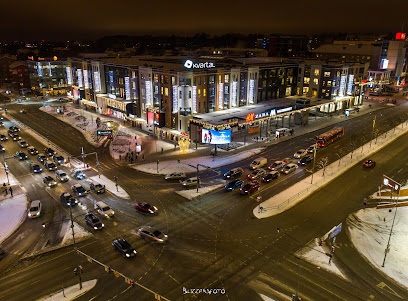
Eeden Shopping Mall
Discover the vibrant shopping scene at Eeden Shopping Mall, Tartu's premier destination for retail therapy, dining, and entertainment.
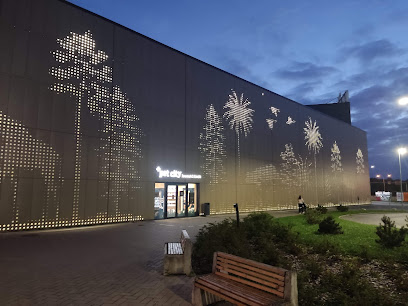
Ujula Coop Konsum
Discover local flavors and everyday essentials at Ujula Coop Konsum, Tartu's vibrant grocery store.
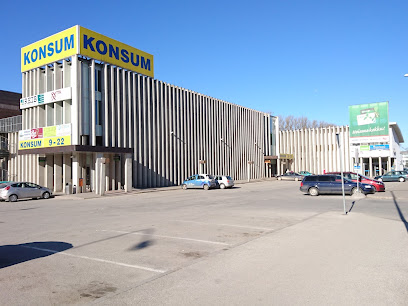
Tartu Rahva Raamat
Explore Tartu Rahva Raamat, the heart of literary culture in Tartu, Estonia, where every book tells a story and every visitor finds inspiration.
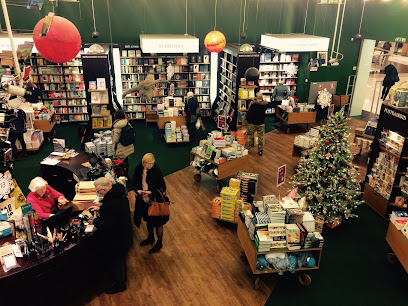
Jõe Keskus
Explore Jõe Keskus in Tartu for a unique blend of outdoor furniture, home goods, and everyday essentials, all in one convenient shopping destination.
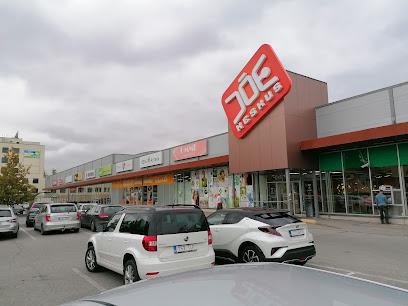
Tartu Kaubamaja Toidumaailm
Discover local Estonian flavors at Tartu Kaubamaja Toidumaailm, a grocery store filled with fresh produce, artisanal foods, and unique culinary delights.

Säde kohviteek
Discover the charm of Säde Kohviteek, Tartu's hidden gem for coffee lovers, where quality meets a cozy atmosphere.
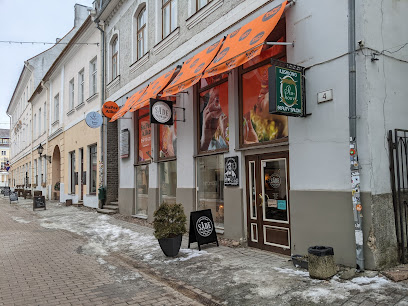
Raatuse Selver ABC
Explore the rich culinary heritage of Tartu at Raatuse Selver ABC, your go-to grocery store for local delicacies and fresh produce.
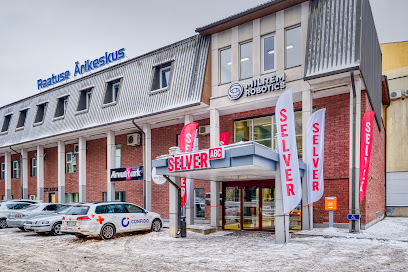
Tartu Tähetorn
Explore the universe at Tartu Tähetorn, a historic observatory museum in Estonia showcasing celestial wonders and rich astronomical history.
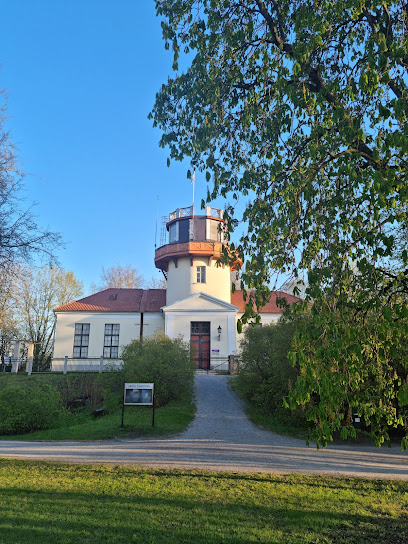
University of Tartu, Museum of Natural History
Explore the University of Tartu Museum of Natural History, where Earth's biodiversity comes to life through engaging exhibits and educational programs.
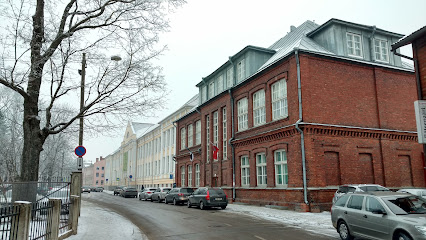
NEW YORKER
Explore the latest fashion trends at NEW YORKER in Tartu, offering a wide range of clothing and accessories for all styles and occasions.

Uuem Viis OÜ
Explore Uuem Viis OÜ in Tartu for a wide range of home goods, work apparel, and kitchen essentials, showcasing local craftsmanship and quality.
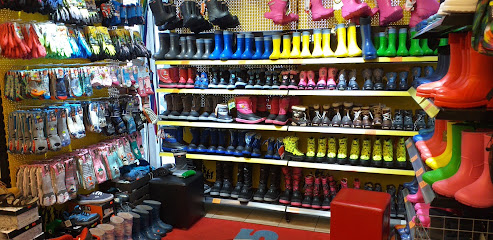
Essential bars & hidden hideouts
Gunpowder Cellar of Tartu
Experience the rich history and delightful flavors at the Gunpowder Cellar, Tartu's unique restaurant and pub destination.
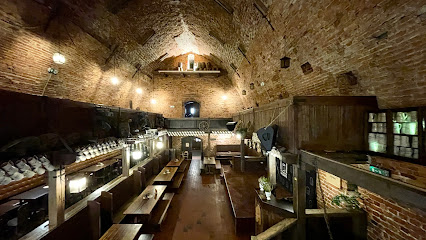
6Teist Kannu
Experience the local flavors and vibrant atmosphere at 6Teist Kannu, Tartu's favorite restaurant and pub.
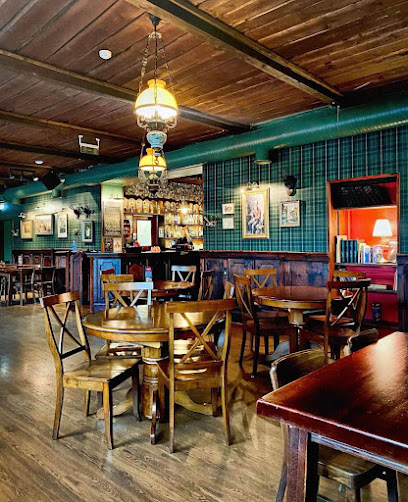
Ränduri pub
Experience the charm of Tartu's Ränduri Pub, where local flavors and a vibrant atmosphere await every visitor.
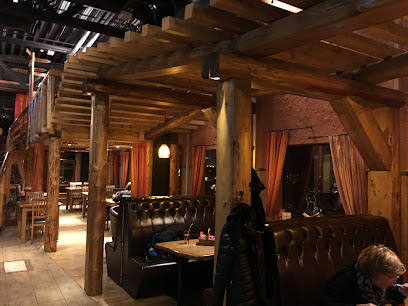
Illegaard
Discover the lively Illegaard Pub in Tartu, where local charm meets a fantastic drink selection in a welcoming atmosphere.
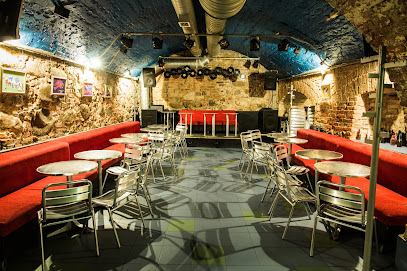
NAIIV Tartu
Discover NAIIV Tartu: A lively bar and cultural center offering cocktails, live music, and art in a cozy atmosphere.

Väike Kuuba Mojito Baar
Experience the vibrant nightlife at Väike Kuuba Mojito Baar, Tartu's go-to spot for refreshing mojitos and delightful tapas in a lively atmosphere.
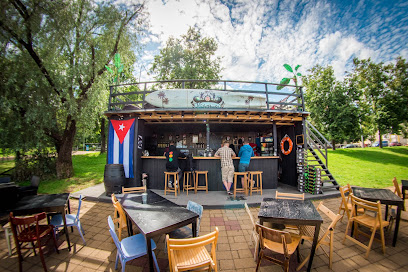
Barlova
Discover the lively ambiance and exceptional drinks at Barlova, a premier bar in Tartu, Estonia, perfect for socializing and relaxation.

The Irish Embassy Pub Tartu
Discover the authentic Irish experience in Tartu at The Irish Embassy Pub, where great food, drinks, and lively atmosphere await you.
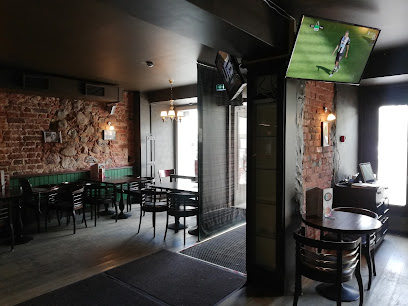
Kivi baar
Experience the vibrant nightlife of Tartu at Kivi Baar, a lively bar offering affordable drinks and a welcoming atmosphere.

Pirogov
Discover the vibrant nightlife at Pirogov, a popular bar in Tartu offering a wide range of drinks and a lively atmosphere for every visitor.
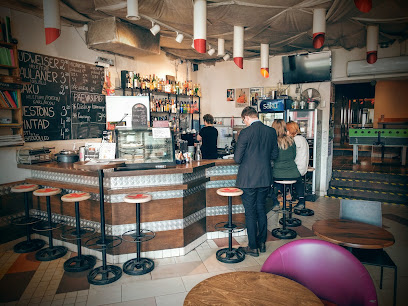
Pühaste Kelder
Discover the cozy atmosphere and exceptional local beers at Pühaste Kelder, a must-visit bar in Tartu, Estonia.
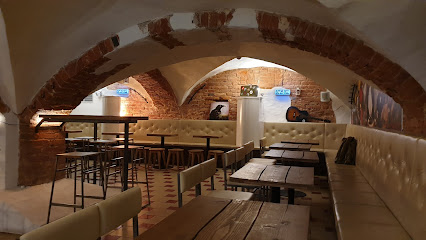
Wine and Vine
Discover the charm of Tartu at Wine and Vine, where exquisite wines and a cozy atmosphere await every visitor.
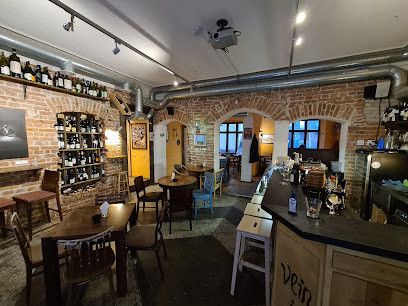
Willy&Rudy
Discover the vibrant atmosphere of Willy&Rudy, Tartu's go-to bar for exquisite drinks and a taste of local Estonian culture.
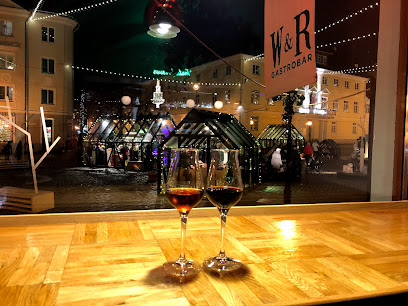
ULA baar
Discover the lively charm of ULA baar in Tartu, where innovative cocktails and a vibrant atmosphere await every visitor.
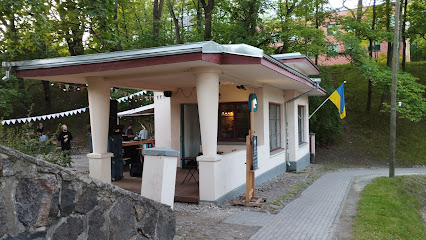
Mülä Baar
Discover the lively spirit of Tartu at Mülä Baar, a vibrant bar offering exquisite drinks and an inviting atmosphere for all travelers.

Local Phrases about Tartu University
-
- HelloTere
[teh-reh] - GoodbyeHead aega
[hed ah-gah] - YesJah
[yah] - NoEi
[ay] - Please/You're welcomePalun
[pah-loon] - Thank youAitäh
[eye-tah] - Excuse me/SorryVabandust
[vah-bahn-doost] - How are you?Kuidas sul läheb?
[kwee-dahs sool lay-heb] - Fine. And you?Hästi. Ja sina?
[hah-stee. yah see-nah] - Do you speak English?Kas sa räägid inglise keelt?
[kahs sah rah-ah-geed een-glee-seh kelt] - I don't understandMa ei saa aru
[mah ay sah ah-roo]
- HelloTere
-
- I'd like to see the menu, pleaseMa sooviksin menüüd näha, palun
[mah soo-viks-een men-oo-d nah-hah, pah-loon] - I don't eat meatMa ei söö liha
[mah ay suh lay-heh] - Cheers!Terviseks!
[ter-vee-seks] - I would like to pay, pleaseMa sooviksin maksta, palun
[mah soo-viks-een mahk-stah, pah-loon]
- I'd like to see the menu, pleaseMa sooviksin menüüd näha, palun
-
- Help!Aidake!
[eye-dah-keh] - Go away!Mine minema!
[mee-neh mee-neh-mah] - Call the Police!Helistage politseisse!
[heh-lee-stah-geh poh-lee-tseh-ees-seh] - Call a doctor!Helistage arstile!
[heh-lee-stah-geh ahr-stee-leh] - I'm lostMa olen eksinud
[mah oh-lehn ehk-see-noo-d] - I'm illMa olen haige
[mah oh-lehn hah-ee-geh]
- Help!Aidake!
-
- I'd like to buy...Ma sooviksin osta...
[mah soo-viks-een oh-stah] - I'm just lookingMa lihtsalt vaatan
[mah leek-stahlt vah-tahn] - How much is it?Kui palju see maksab?
[kwee pahl-yoo seh mahk-sahb] - That's too expensiveSee on liiga kallis
[seh ohn lee-gah kah-lees] - Can you lower the price?Kas sa saaksid hinda alandada?
[kahs sah sah-ahk-seed hin-dah ah-lahn-dah-dah]
- I'd like to buy...Ma sooviksin osta...
-
- What time is it?Mis kell on?
[mees kell ohn] - It's one o'clockOn üks
[ohn uks] - Half past (10)Pool (10)
[pohl (dih-sah-teh)] - MorningHommik
[hohm-meek] - AfternoonPärastlõuna
[pah-rahs-tloh-nah] - EveningÕhtu
[uht-oo] - YesterdayEile
[ay-leh] - TodayTäna
[tah-nah] - TomorrowHomme
[hohm-meh] - 1Üks
[ooks] - 2Kaks
[kahks] - 3Kolm
[kohlm] - 4Neli
[neh-lee] - 5Viis
[vees] - 6Kuus
[koos] - 7Seitse
[sayt-seh] - 8Kaheksa
[kah-hehk-sah] - 9Üheksa
[u-hehk-sah] - 10Kümme
[koom-meh]
- What time is it?Mis kell on?
-
- Where's a/the...?Kus on ...?
[koos ohn] - What's the address?Mis on aadress?
[mees ohn ah-ah-dress] - Can you show me (on the map)?Kas sa saad mulle näidata (kaardil)?
[kahs sah sah-ahd muhl-leh nah-ee-tah-dah kah-ahr-deel] - When's the next (bus)?Millal on järgmine (buss)?
[meel-lahl ohn yairg-mee-neh boos] - A ticket (to ....)Pilet (....le)
[pee-leht leh]
- Where's a/the...?Kus on ...?
History of Tartu University
-
Tartu University, known as the University of Tartu, was founded in 1632 by King Gustavus Adolphus of Sweden. It is one of the oldest universities in Northern Europe and has played a significant role in the region's educational and cultural development.
-
During its early years, Tartu University operated under Swedish rule. The university became a center for Protestant education and attracted scholars from across Europe. This period laid the foundation for the university's academic excellence and international reputation.
-
In 1710, Tartu and its university came under the control of the Russian Empire. The institution was closed for a short period and reopened in 1802 as the Imperial University of Dorpat. During this time, it became a prominent center for research and higher education in the Russian Empire.
-
In the late 19th and early 20th centuries, Tartu University played a pivotal role in the Estonian National Awakening. Many influential Estonian intellectuals and cultural figures were educated at the university, contributing to the rise of national consciousness and the push for independence.
-
Following World War II, Estonia was incorporated into the Soviet Union, and Tartu University underwent significant changes. The university was restructured to align with Soviet educational policies, and many academic freedoms were restricted. Despite these challenges, it remained a vital center for learning and research.
-
With the collapse of the Soviet Union in 1991, Estonia regained its independence, and Tartu University entered a new era. The institution quickly reestablished its autonomy, reformed its academic programs, and resumed its role as a leading European university. Today, it is a hub for innovation, research, and higher education in the region.
-
In recent decades, Tartu University has continued to grow and evolve. It is now a member of several international academic networks and collaborates with universities worldwide. The university is renowned for its research in fields such as biotechnology, information technology, and environmental science, contributing to global scientific advancements.
Tartu University Essentials
-
Tartu University is located in the city of Tartu, Estonia. The nearest international airport is Lennart Meri Tallinn Airport in Tallinn, approximately 185 kilometers away. From Tallinn, you can take a bus or train to Tartu, with the journey typically taking around 2 to 2.5 hours. Buses are frequent and depart from Tallinn’s central bus station. Trains also offer a comfortable and scenic route with several departures throughout the day.
-
Tartu is a compact city, and many of its attractions, including Tartu University, are within walking distance. For longer trips, local buses provide efficient transportation within the city. Taxis are also readily available and relatively affordable. Renting a bicycle is a popular option among locals and tourists alike, as Tartu is very bike-friendly. Car rental services are available but may not be necessary unless you plan to explore the surrounding areas.
-
The official currency in Estonia is the Euro (EUR). Credit and debit cards are widely accepted in Tartu, including at hotels, restaurants, and shops. ATMs are plentiful and can be found throughout the city. It is advisable to carry some cash for small purchases or in case you visit establishments that do not accept cards.
-
Tartu is generally a safe city for tourists. However, standard precautions should be taken. Avoid walking alone at night in poorly lit areas and always keep an eye on your belongings in crowded places. The areas around the train and bus stations may attract petty criminals, so stay alert. While Tartu does not have significant high-crime areas targeting tourists, it is always best to remain vigilant.
-
In case of emergency, dial 112 for immediate assistance, which is the general emergency number in Estonia. The nearest hospital to Tartu University is Tartu University Hospital, offering comprehensive medical services. Pharmacies are widely available for minor health issues. It is recommended to have travel insurance that covers medical emergencies.
-
Fashion: Do dress comfortably and appropriately for the weather. Casual wear is generally acceptable. Don't wear overly revealing clothing, especially in religious or academic settings. Religion: Do respect local customs and traditions. When visiting religious sites, dress modestly and behave respectfully. Public Transport: Do validate your ticket when using public transport. Don't eat or drink on public buses. Greetings: Do greet people with a friendly 'Tere' (Hello). A handshake is common in formal settings. Eating & Drinking: Do try local Estonian delicacies and traditional dishes. Don't refuse hospitality, as it can be considered impolite.
-
To experience Tartu University like a local, take a leisurely stroll through Toome Hill Park, which offers scenic views and historical sites. Visit the University of Tartu Museum housed in the historic main building to learn more about the university's rich history. Engage with students and locals at popular cafes and pubs around the university area. Don't miss the chance to attend a lecture or seminar open to the public, as it can provide a unique insight into academic life at Tartu University.
Trending Landmarks in Tartu University
-
AHHAA Science Centre
-
Estonian National Museum
-
Tagurpidi Maja (Peapeal OÜ)
-
Town Hall Square
-
Botanical Garden of the University of Tartu
-
Aura Waterpark
-
Ice Age Centre
-
Estonian Aviation Museum
-
Tartu Mänguasjamuuseum / Tartu Toy Museum
-
Restaurant München - Weihenstephaner Wirtshaus
-
University of Tartu
-
Ruins of Tartu Cathedral
-
Illegaard
-
St. John Church, Tartu
-
Tartu Angel's Bridge
Nearby Cities to Tartu University
-
Things To Do in Võru
-
Things To Do in Viljandi
-
Things To Do in Valga
-
Things To Do in Paide
-
Things To Do in Rakvere
-
Things To Do in Jõhvi
-
Things To Do in Pärnu
-
Things To Do in Rapla
-
Things To Do in Cesis
-
Things To Do in Tallinn
-
Things To Do in Sigulda
-
Things To Do in Haapsalu
-
Things To Do in Riga
-
Things To Do in Helsinki
-
Things To Do in Porvoo











